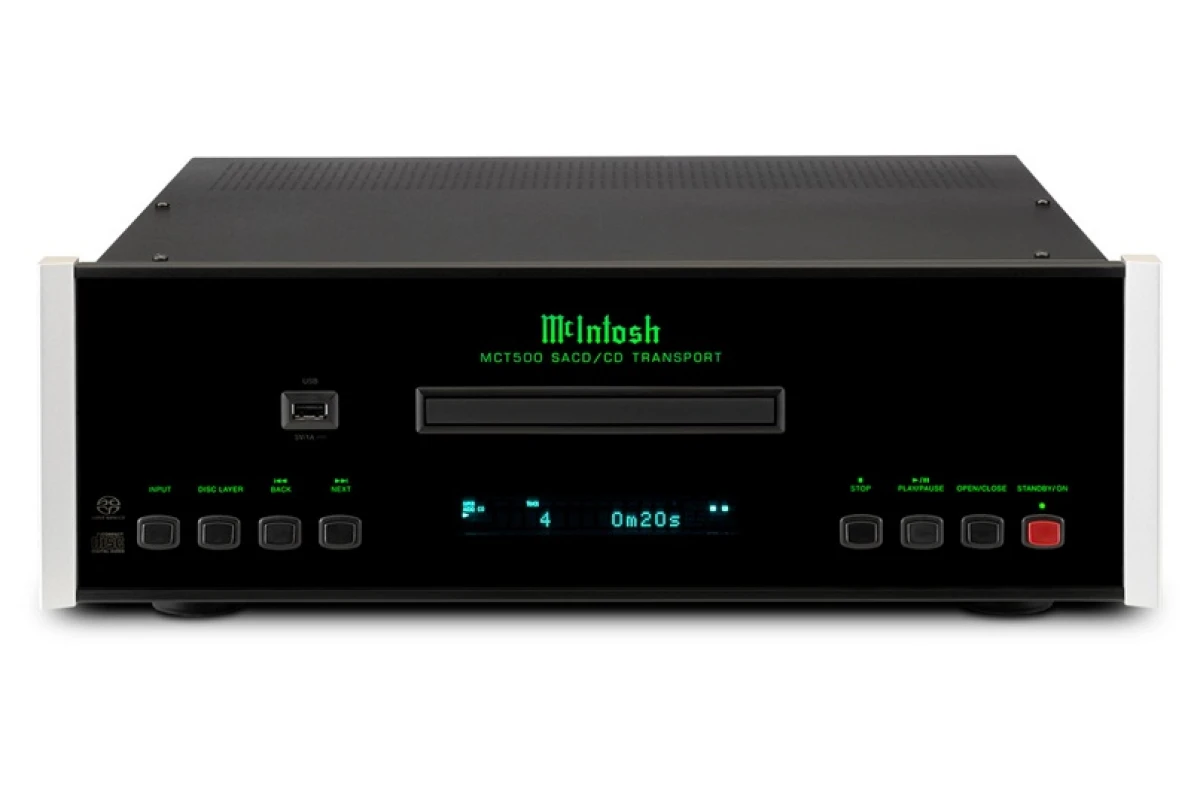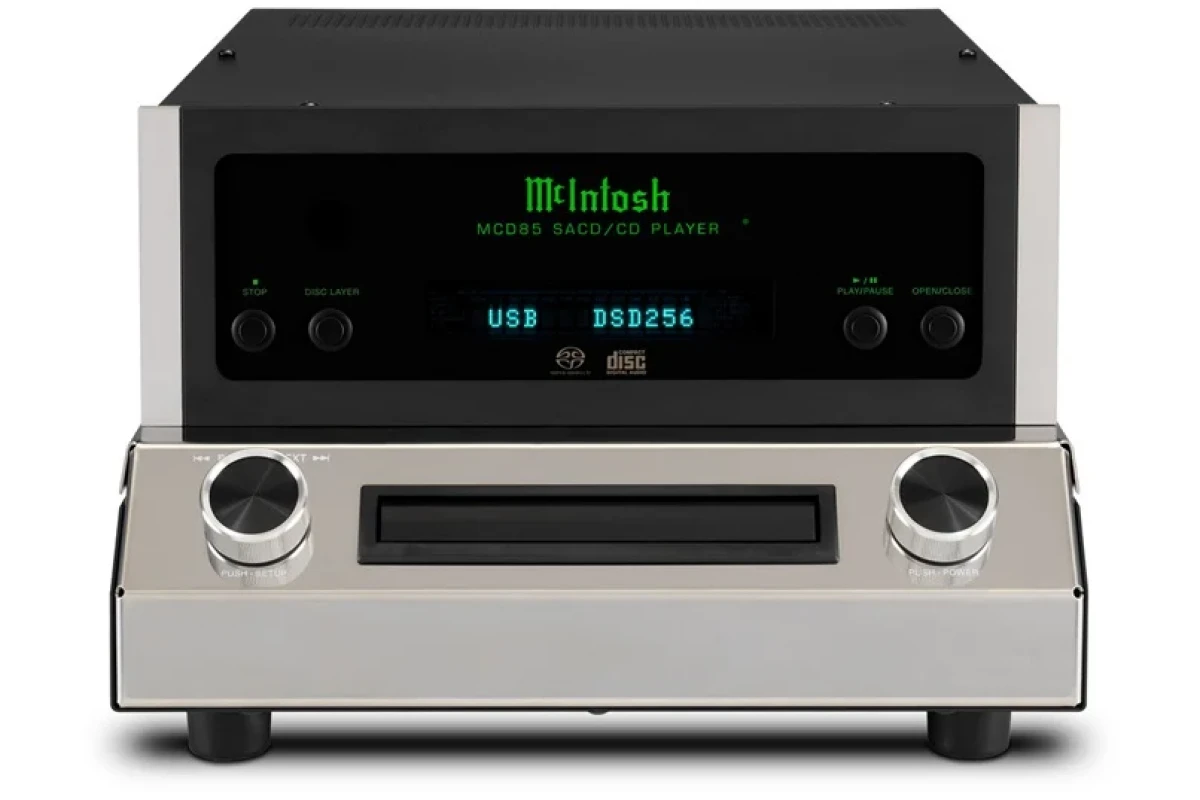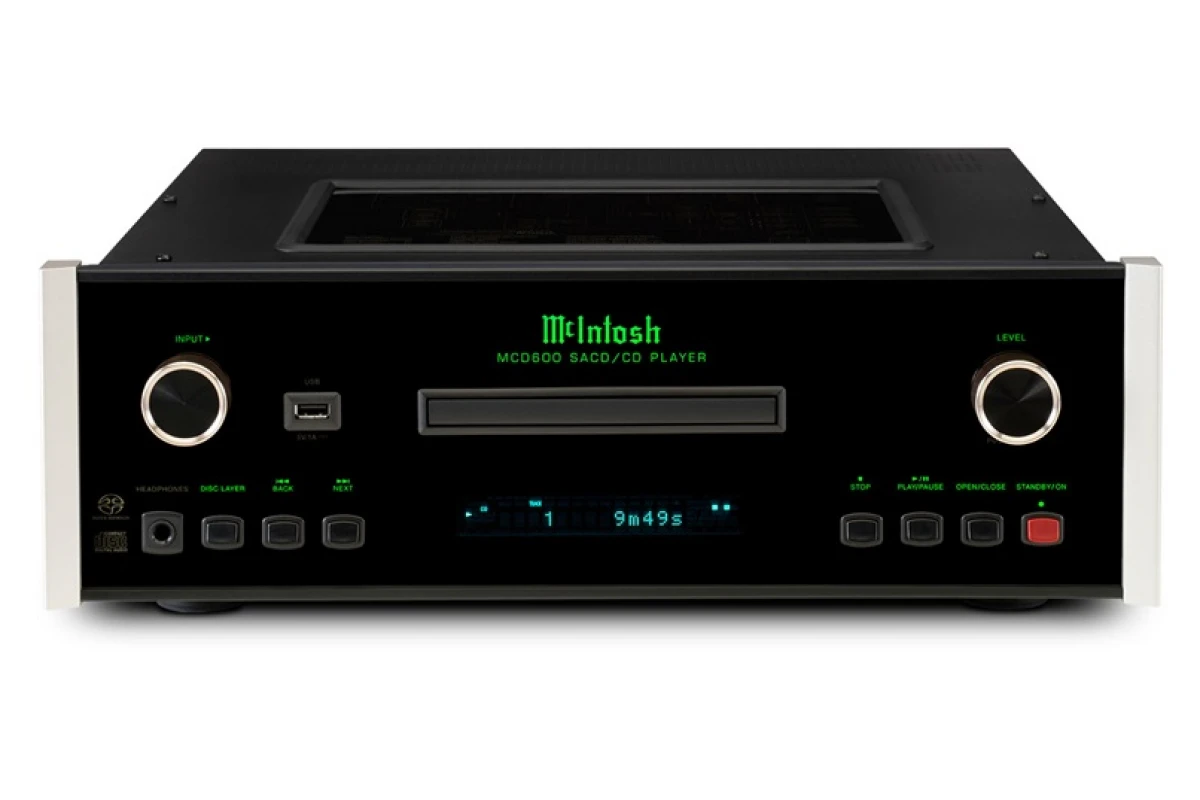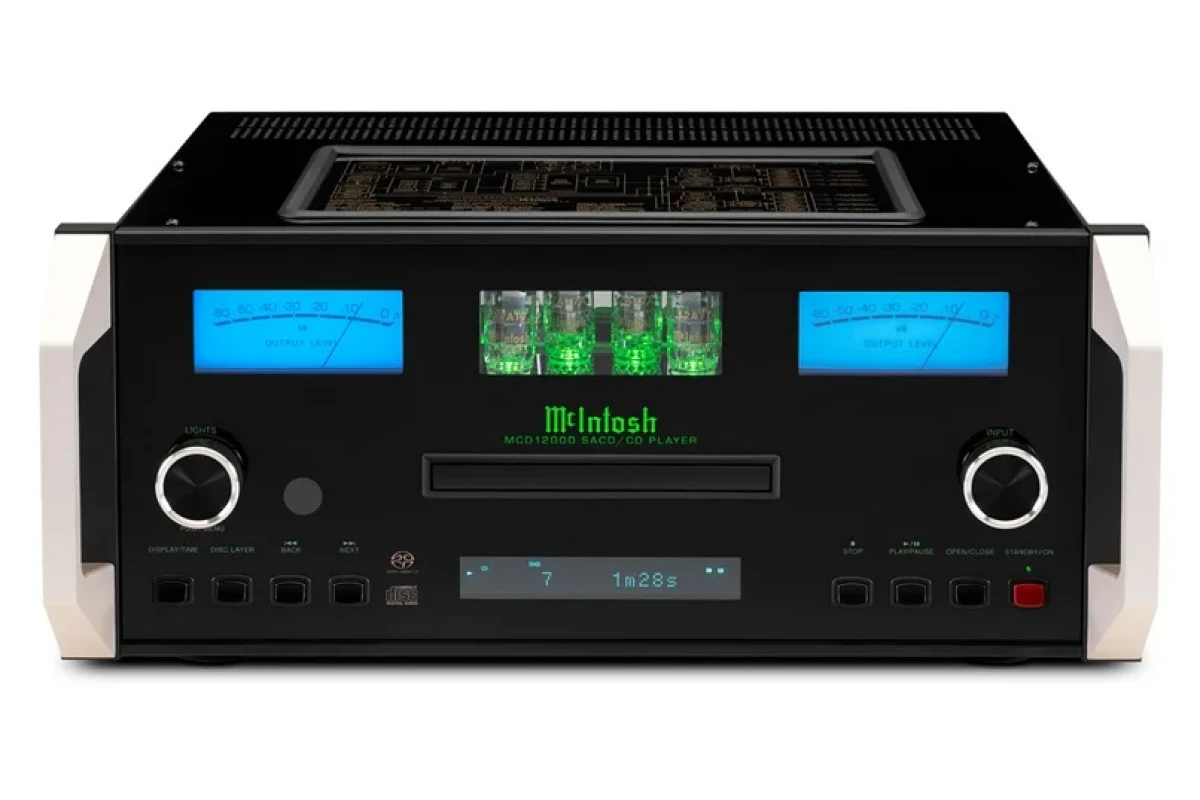CD / SACD players and transports — McIntosh MCD350
Description, images, technical data and specifications
McIntosh MCD350
Image source — © McIntosh
Specifications
Model name
MCD350
Transport
Yes
Player
Yes
SACD support
Yes
Engine
N/A
Frequency response low +/- 3dB (for CD) (Hz)
4
Frequency response high +/- 3dB (for CD) (Hz)
20 000
Frequency response low +/- 3dB (for SACD) (Hz)
4
Frequency response high +/- 3dB (for SACD) (Hz)
40 000
Gain (dBu)
N/A
Output Level (balanced) (V)
4
Output Level (single-ended) (V)
2
Input Impedance (balanced) (Ω)
N/A
Input Impedance (single-ended) (Ω)
N/A
Output Impedance (balanced) (Ω)
600
Output Impedance (single-ended) (Ω)
600
Dynamic range (for CD) (dB)
>100
Dynamic range (for SACD) (dB)
>100
Signal to Noise Ratio (for CD) (dB)
>108
Signal to Noise Ratio (for SACD) (dB)
>108
Total Harmonic Distortion + Noise (for CD) (%)
0.002
Total Harmonic Distortion + Noise (for SACD) (%)
0.003
Dimensions (mm)
444.5 x 152.4 x 483
Weight (kg)
12.7
Official link
More components

CD / SACD players and transports
McIntosh MCT500

CD / SACD players and transports
McIntosh MCD85

CD / SACD players and transports
McIntosh MCD600

CD / SACD players and transports
McIntosh MCD12000


